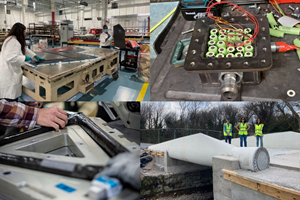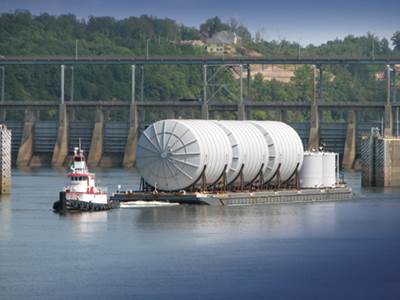Old dogs, new tricks
CT Editor-in-chief Jeff Sloan wonders why the composites industry owns only a 5 percent share of the huge corrosion control market.
In a perfect capitalistic system, we are told, the market self-selects, based on quality. Inferior products don’t sell. Companies are incentivized to work harder to develop superior products more cost-effectively. In this way, creativity and innovation are encouraged as they not only move better but more cost-effective products to market, but handsomely reward their creators for their efforts. Computers and mobile phones are two obvious results that prove the model. But capitalism relies on what economic theorists call “rational actors” — producers and consumers who predictably pursue the most cost-effective products and solutions.
It is, therefore, baffling that composites have, today, only a 5 percent share of the corrosion-control market in the face of an abundance of good arguments for their clear superiority (see CT's Market Outlook, titled "Industrial corrosion control: Huge opportunities," under "Editor's Picks," at top right)). Composites are established materials that have been in the market for more than 30 years. Composites have a strong history of effective corrosion resistance. Composites have been proven more cost-effective than metals and concrete in corrosion control. Composites offer less weight, greater strength and greater stiffness than metals and concrete in corrosion control. And producers of resin and glass fibers for corrosion-control applications have established a strong presence in the market and can easily support and educate new customers.
How is it that “rational actors” in the corrosion control market have failed to recognize these benefits for so many years and have not yet made composites the de facto material in a large majority of applications?
One possible explanation — and possibly the best (if you subscribe to Ockham’s razor) — is that the market lacks rational actors. This is not to suggest that manufacturers of corrosion control systems are in some way deficient, but I contend that they are human, and humans have a habit of behaving unpredictably. In corrosion control, author Wood notes, some customers are hesitant to embrace composites because they don’t know which resin/fiber combination to use. Others point to uncertainty regarding manufacturing processes, or lack of labor sufficient to produce quality parts.
All this suggests a simple answer: The biggest hurdle is a fear of change. If you have worked with concrete and steel for 20 years to make a structure that must function in a corrosive environment, how willing will you be to adapt to use of composites? And if you are a consumer of corrosion-control equipment, how willing are you to try a “new” material if what you’ve used for so long works “well enough”?
Fortunately, there is a growing group of rational actors who eschew mere habit and overcome fear to look for ways to extend the service life of structures in corrosive environments. They are demanding composites-based solutions, and this will propel the material’s share of market out of the basement. In the meantime, it will be up to us (you and me) to continue to educate the irrational actors in the marketplace. As we’ve learned in other market segments, offering a well-designed, well-made, cost-effective composite part isn’t enough. The market has always needed some nudging to get it moving in the right direction.
Related Content
The (not exactly) new guy at CW
Former CW writer and editor Scott Francis rejoins the brand as editor-in-chief as Jeff Sloan assumes the role of publisher.
Read MoreAs 2023 begins, a look back at trending CW topics in 2022
With 2022 now behind us, CW’s editor-in-chief Jeff Sloan takes a look at the CW stories last year that received the most reader attention.
Read MoreThe real value of CompositesWorld
Will CW editor-in-chief Jeff Sloan soon be replaced by ChatGPT? Probably not before he retires, but it’s fun to consider the possibility.
Read MoreA return to JEC World
CW editor-in-chief Scott Francis reflects on the ways in which the composites industry has changed and also stayed the same based on observations from this year’s JEC World.
Read MoreRead Next
Industrial corrosion control: Huge opportunities
Fiber-reinforced plastic is the ideal but still widely ignored option in environments that eat away at most metal alloys. Opportunities abound, but the key is still education.
Read MorePlant tour: Daher Shap’in TechCenter and composites production plant, Saint-Aignan-de-Grandlieu, France
Co-located R&D and production advance OOA thermosets, thermoplastics, welding, recycling and digital technologies for faster processing and certification of lighter, more sustainable composites.
Read MoreDeveloping bonded composite repair for ships, offshore units
Bureau Veritas and industry partners issue guidelines and pave the way for certification via StrengthBond Offshore project.
Read More






















